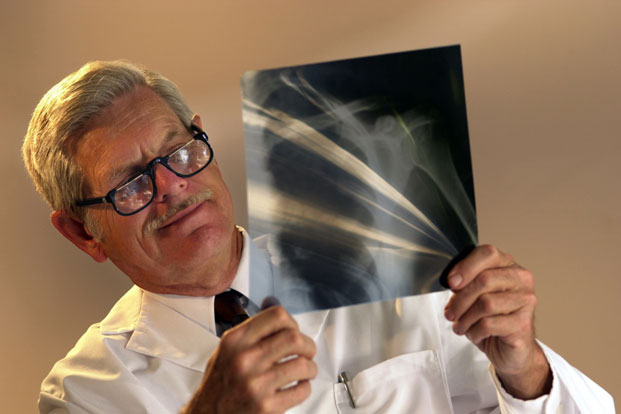Have you ever heard of Clarkson’s disease? How about a gangliocytoma?
We didn’t think so.
Welcome to the world of rare diseases. In truth, rare diseases are health conditions most people have never heard of.
According to the National Institutes of Health (NIH), a disease is considered rare in the United States if it affects less than 200,000 people. In total, there are about 6,800 rare diseases, and these diseases affect 25 to 30 million Americans.
Those who experience rare diseases experience a range of issues. Not only is it tough to figure out just what’s going on, but treatment itself also can be limited. (And that’s if any research is being done on the disease at all.) Plus, rare diseases can be costly, racking up massive bills.
Rare Disease Day, held on the last day of February annually, is all about raising awareness for these conditions. There’s a reason this special date was selected. If you think about it, when Leap Day occurs, it’s the rarest date on the calendar.
Originally established in Europe in 2008, more than 80 nations commemorate Rare Disease Day. In fact, the United States joined this growing force in 2009. And in 2013, President Barack Obama even sent a letter proclaiming his support of the day. In 2015, more than 14 states were said to have joined the Rare Disease Day bandwagon. Festivities included conferences, artistic events, fundraising walks and benefit dinners.
Clarkson’s Disease
According to the Mayo Clinic, systemic capillary leak syndrome, also called Clarkson’s disease, “is a rare disorder characterized by recurrent flares of massive leakage of plasma and other blood components from blood vessels into neighboring body cavities and muscles.”
The result of this leakage is swelling. “The symptoms result from a sudden and unexplained increase in the leakiness of small blood vessel (capillary) walls,” according to the Mayo Clinic. “Unless treated, massive fluid shifts result in a sharp drop in blood pressure that can lead to organ failure and death.”
Symptoms of Clarkson’s disease include sudden swelling, a quick drop in blood pressure, shock, dizziness or lightheadedness, a feeling of weakness and nausea.
In truth, it’s not known why Clarkson’s disease occurs. However, it is thought that this health condition sometimes can be caused by an upper respiratory tract infection, which triggers it.
Blood and urine tests are used to diagnose this condition. These tests may reveal excess amounts of red blood cells from plasma leakage. Decreased amounts of the protein albumin may be found. And doctors will look for a protein called monoclonal protein that can signify the disease.
Gangliocytoma
Gangliocytoma “is a rare type of central nervous system (CNS) tumor made up of mature neurons,” according to the NIH. Though this condition can occur at any age, it is most often seen in those between the ages of 10 and 30.
Gangliocytomas occur most often in the temporal lobe of the brain. But the NIH says they can arise anywhere in the central nervous system. Other sites where gangliocytomas can occur include the cerebellum, brainstem, floor of the third ventricle and spinal cord.
Though exact symptoms related to gangliocytomas depend on the tumor’s location, there are signs to look for. The most common of these is seizures. However, those affected can also experience increased brain pressure, endocrine disorders and focal symptoms.
The good news is that gangliocytomas are not usually malignant and grow slowly. Once a gangliocytoma is discovered, it is usually surgically removed.
Ulnar Club Hand
Ulnar club hand is a condition that affects about one in 100,000 babies. It is a birth defect that occurs for unknown reasons.
According to the Boston Children’s Hospital, ulnar club hand causes the child’s wrist to bend and stay in a fixed position toward the side of the hand with the pinky finger.
The condition can happen for two reasons. The first is when the ulna, the bone that links the elbow to the forearm, doesn’t form properly. The second is that the thumb is either not present or is deformed.
Treatment involves exercises and splinting. Corrective surgery is usually performed.
Achalasia
According to the National Organization for Rare Disorders (NORD), “Achalasia is a rare disorder of the esophagus, the tube that carries food from the throat to the stomach. It is characterized by enlargement of the esophagus, impaired ability to push food down toward the stomach (peristalsis), and failure of the ring-shaped muscle at the bottom of the esophagus, the lower esophageal sphincter (LES), to relax.”
Symptoms of this disorder develop over time. The first sign may be trouble swallowing, and chest pain may occur. Those affected may also regurgitate, which at times may affect the patient’s ability to breathe. Further, those affected may cough and lose weight due to swallowing issues. Dry mouth and eyes also may occur.
There are many conditions associated with achalasia. These include pneumonia, pulmonary infections and cancer of the esophagus.
Achalasia is usually diagnosed by x-ray. “Radiological examination, especially with the use of barium, may show enlargement (dilation) of the esophagus and the retention of food and secretions within the esophagus,” according to NORD. “Devices that measure fluid pressure (manometers) within the esophagus may also be useful in the diagnosis of this disorder.”
Once achalasia is diagnosed, obstructions causing the disorder are removed. Isosorbide, (a long-acting nitrate) or nifedipine are often prescribed.
“Approximately 85 percent of cases of achalasia may be treated effectively by the enlargement of the lower esophageal sphincter muscle through a procedure known as balloon dilation. This is a complicated procedure. In some people, repeated dilations may be necessary to obtain relief of symptoms,” according to NORD. Surgery is effective in as much as 85 percent of cases.

Leave a Reply